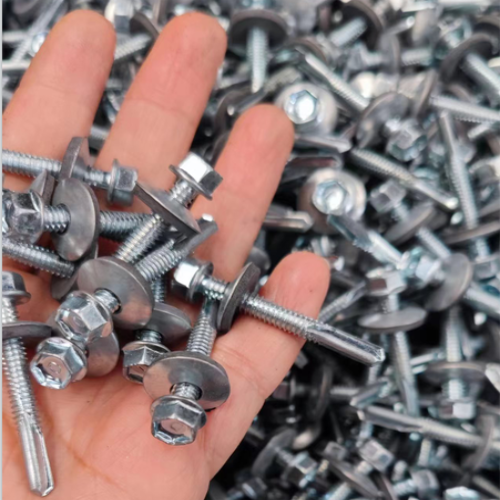recommended drywall screw length
Understanding Recommended Drywall Screw Lengths A Comprehensive Guide
When it comes to drywall installation, selecting the appropriate screw length is crucial for ensuring a sturdy and professional finish. Drywall, also known as gypsum board or plasterboard, is used widely in the construction of walls and ceilings. The right screws contribute significantly to the overall strength and durability of the structure, preventing issues like sagging or cracking over time. This article aims to clarify the recommended drywall screw lengths, factors that influence screw selection, and tips for effective installation.
Recommended Screw Lengths
The general recommendation for drywall screw lengths varies depending on the thickness of the drywall being installed. The most common drywall thicknesses are 1/2 inch, 5/8 inch, and 1/4 inch. Here are the standard screw lengths typically used
- 1/2 inch drywall For 1/2 inch drywall, 1-1/4 inch screws are most commonly recommended. These screws have enough length to anchor securely into wooden framing, providing a solid hold without penetrating too far and risking damage to the other side.
- 5/8 inch drywall When installing 5/8 inch drywall, it is advisable to use 1-5/8 inch screws. This additional length ensures that the screw firmly grips the framing behind the drywall while accounting for the extra thickness.
- 1/4 inch drywall Although less common, 1/4 inch drywall is often used in specific applications like ceilings. For this thickness, 1-inch screws are usually recommended to offer sufficient engagement while preventing breakage or misalignment.
Factors Influencing Screw Selection
While the thickness of the drywall is a primary factor in determining screw length, several other variables can influence the choice of screws
1. Type of Framing Material The material behind the drywall (wood vs. metal studs) also plays a crucial role. For wood studs, standard drywall screws work well. However, when attaching drywall to metal studs, special self-tapping screws are necessary to ensure a secure hold.
recommended drywall screw length

2. Installation Method The installation technique can dictate the screw length. For instance, when using a drywall lift or if the drywall is being applied in a way that requires extra stability (like on a ceiling), longer screws may be preferred.
3. Environmental Conditions In environments with high humidity or moisture, using corrosion-resistant screws, such as those made from stainless steel or coated screws, may be necessary to prevent rusting and degradation over time.
4. Weight of the Drywall Specialty drywall, designed for specific applications (e.g., fire-rated or soundproof drywall), may necessitate longer or stronger screws to support its additional weight.
Tips for Effective Screw Installation
- Spacing When installing drywall, screws should be spaced appropriately. The general rule is to place screws 12 inches apart along the edges and 16 inches apart in the field, ensuring maximum support.
- Countersinking It is essential to countersink the screws slightly below the surface of the drywall. This allows for a smooth finish when taping and mudding, preventing the screw heads from interfering with the surface.
- Use of a Screw Gun A screw gun helps maintain consistent depth and speed, reducing the risk of overdriving or underdriving screws, leading to a better finish.
- Pre-drilling In some cases, especially with harder woods or when using thicker drywall, pre-drilling holes may be beneficial to avoid cracking the drywall or splitting the studs.
Conclusion
Choosing the correct drywall screw length is vital for a successful installation. By adhering to the recommended lengths based on drywall thickness and considering the framing material, installation methods, and environmental factors, you can ensure that your drywall installation is durable and aesthetically pleasing. Paying attention to screw spacing and installation techniques further enhances the quality of the finished product. Properly installed drywall not only contributes to the overall durability of a structure but also provides a seamless canvas for paint and decoration.
-
Top Choices for Plasterboard FixingNewsDec.26,2024
-
The Versatility of Specialty WashersNewsDec.26,2024
-
Secure Your ProjectsNewsDec.26,2024
-
Essential Screws for Chipboard Flooring ProjectsNewsDec.26,2024
-
Choosing the Right Drywall ScrewsNewsDec.26,2024
-
Black Phosphate Screws for Superior PerformanceNewsDec.26,2024
-
The Versatile Choice of Nylon Flat Washers for Your NeedsNewsDec.18,2024










